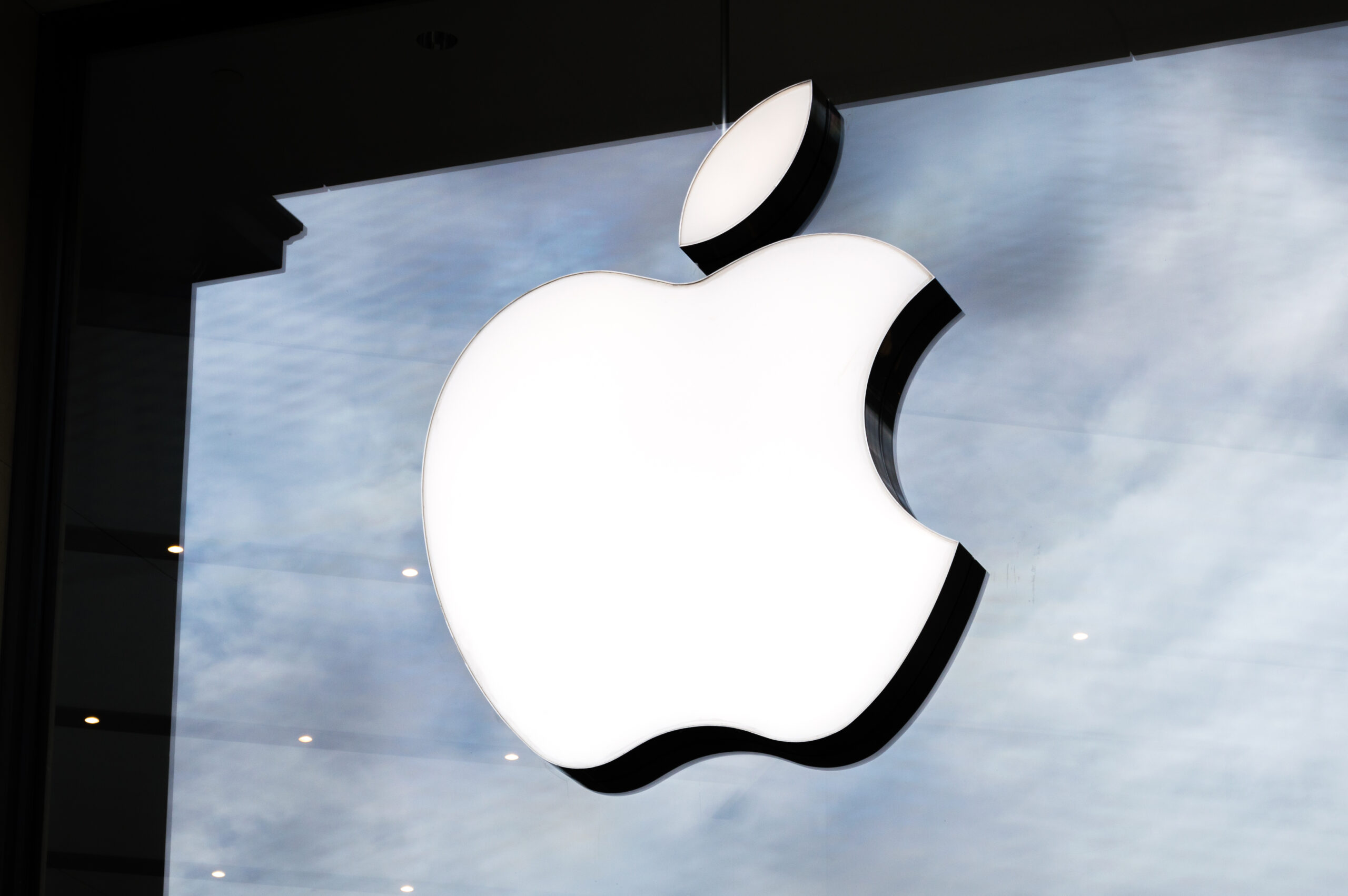Inside Apple’s Multi-Cloud Strategy, Data Security, and Future Cloud Independence
If there’s anything we know about Apple, it’s that it is a company built on control. It designs its own chips, develops its own software, and dictates the rules of its tightly woven ecosystem. From the iPhone to macOS, Apple has mastered vertical integration—owning every layer of its product stack.
The single, critical exception: the cloud.
Unlike Amazon (AWS) and Google (GCP), which power their own ecosystems with in-house cloud infrastructure, Apple relies on third-party providers to support its core services.
This raises an uncomfortable question: Why does a $3 trillion company still depend on external cloud services?
More importantly, will Apple ever fully own its cloud infrastructure?
Apple’s cloud future isn’t just a technical challenge—it’s a strategic necessity. The choices Apple makes now could reshape its competitive position for decades.
Apple’s Cloud Strategy—A Control vs. Dependency Dilemma
Apple has built its empire on self-reliance, but in the cloud, it plays by someone else’s rules. Unlike its competitors—Amazon, Google, and Microsoft—who own their cloud infrastructure, Apple still leans on third-party providers to keep its services running.
This dependency isn’t just an operational choice; it’s a strategic contradiction. Apple controls everything from its custom silicon (M-series chips) to its proprietary operating systems, yet iCloud data—arguably one of the most privacy-sensitive assets—flows through external cloud networks.
Apple’s Third-Party Cloud Partners: Who’s Powering iCloud?
1. iCloud Storage & Syncing: AWS & Google Cloud Handle the Heavy Lifting
Apple markets iCloud as a seamless and secure storage solution—but it doesn’t fully own the backend. Instead, iCloud data is stored on:
Amazon Web Services (AWS) – The primary cloud provider for iCloud backups, iMessage storage, and user data.
Google Cloud – Supports iCloud storage as a secondary cloud partner.
Key Fact: Apple spends over $30 million per month on AWS to keep iCloud running, highlighting the sheer scale of its cloud dependency.
Privacy Considerations:
Apple encrypts iCloud data before sending it to AWS or Google Cloud, meaning even Apple’s cloud providers can’t access user files. However, this doesn’t change the fact that Apple’s most sensitive user data is still hosted externally.
2. Apple Music & Apple TV+: Powered by External CDNs for Global Streaming
Unlike iCloud, Apple doesn’t rely on AWS or Google Cloud to stream its entertainment services. Instead, it uses a network of Content Delivery Networks (CDNs) to optimise speed and performance.
Akamai, Fastly, and other CDNs – Apple partners with major CDN providers to ensure fast, low-latency streaming for Apple Music and Apple TV+.
Edge Computing for Efficiency – Apple caches content closer to users, reducing buffering and improving load times.
Why Not Just Use AWS?
CDNs specialise in high-speed, global content delivery, which makes them a better fit than traditional cloud storage for Apple’s streaming services.
3. App Store & Software Updates: Apple’s In-House Cloud at Work
Unlike iCloud, Apple does not rely on third-party cloud providers to distribute apps and software updates.
Apple’s Private Data Centers – Handles App Store downloads, macOS/iOS updates, and system security patches.
Optimised for Scale – Apple’s in-house infrastructure ensures global app distribution without reliance on AWS or Google Cloud.
Why This Matters:
By keeping software updates and App Store distribution in-house, Apple avoids cloud provider bottlenecks and ensures faster, more secure delivery of its ecosystem updates.
4. Siri & AI Processing: A Hybrid Approach to AI Workloads
Siri, Apple’s AI-driven assistant, is one of the few areas where Apple has been actively moving workloads to its private cloud infrastructure.
- Some Siri requests are processed on Apple’s in-house servers for security and speed.
- Other Siri functions rely on AWS & Google Cloud for backend processing.
The Shift Toward Private AI Cloud:
Apple is developing on-device AI processing with Apple Silicon (M-series chips) to reduce dependence on cloud-based AI models. The future of Siri and AI workloads will likely shift further in-house as Apple continues developing its own AI infrastructure.

Why Doesn’t Apple Own Its Cloud?
Apple’s reluctance to fully build its own cloud infrastructure comes down to three factors:
1. Scale & Cost:
- A full-fledged cloud infrastructure requires billions in upfront investment.
- AWS and Google Cloud have spent over a decade and hundreds of billions building scalable cloud ecosystems.
- Even with Apple’s financial muscle, competing at this level is a long-term play.
2. Strategic Priorities:
- Apple’s business model has been hardware-first, with services like iCloud playing a supporting role.
- Unlike Amazon (which monetizes AWS) or Microsoft (which scales Azure), Apple has had little incentive to be in the cloud business—until now.
3. Short-Term Agility vs. Long-Term Control:
- Leveraging AWS and Google Cloud allows Apple to scale its services rapidly without the operational burden of managing global data centers.
- However, as privacy regulations tighten and cloud costs rise, Apple’s reliance on external providers is becoming a liability.
This is where Project McQueen comes in—Apple’s quiet but deliberate shift toward cloud independence.
Apple’s Own Cloud Initiatives: Project McQueen & The Shift to Private Cloud
For years, Apple has operated in a cloud paradox—touting security, privacy, and ecosystem control while still relying on AWS and Google Cloud for iCloud storage. But that’s changing.
Enter Project McQueen—Apple’s long-term strategy to bring more of its cloud operations in-house.
What Is Project McQueen?
Project McQueen is Apple’s silent but strategic move toward cloud independence. First revealed in 2016, it aims to build Apple-owned data centers to reduce reliance on third-party cloud providers.
While Apple won’t replace AWS and Google Cloud overnight, Project McQueen signals a gradual shift toward private cloud infrastructure.
Why Now? The Urgency Behind Apple’s Move to Private Cloud
Until now, Apple has accepted the trade-off—outsourcing its cloud storage needs to AWS and Google Cloud while focusing on hardware and software optimization. But the business case for owning the cloud has shifted.
1. Security & Privacy: A Competitive Advantage at Risk
Apple sells privacy as its differentiator, yet iCloud data still passes through third-party networks. As data regulations tighten and privacy expectations rise, relying on AWS and Google Cloud introduces a major security vulnerability.2. Cost Savings: The Economics of Cloud Have Changed
Apple spends over $30 million per month on AWS alone—a staggering $400 million annually. That was sustainable when Apple’s Services division was just an add-on to hardware sales. But now? Services are Apple’s second-largest revenue driver, generating $100+ billion annually.3. Performance & AI Optimisation: Preparing for the Future of Computing
Apple’s Neural Engine, M-series chips, and future AI ambitions require seamless cloud-to-device integration. But when AWS and Google Cloud handle the back-end, Apple is limited by infrastructure it doesn’t fully control.
Our take: Apple doesn’t need to compete with AWS or Google Cloud, but it does need greater control over its cloud infrastructure. The next five years will be pivotal in shaping its approach to security, AI, and cost efficiency. Delaying cloud independence any further means continuing to rely on external providers for core services—an approach that may not be sustainable long term.
Apple’s Cloud Future: What Comes Next?
Apple has spent decades perfecting vertical integration, yet when it comes to cloud infrastructure, it remains dependent on third parties. The question isn’t if Apple will move toward greater cloud control—but how.
Here are three possible paths that we see playing out, each with its own risks and strategic trade-offs.
1. Build a Full-Scale Apple Cloud (Unlikely in the Short Term)
A fully independent Apple Cloud—one that rivals AWS or Google Cloud—would be a game-changer. It would give Apple complete control over iCloud, Siri, Apple AI models, and future enterprise services.
But this isn’t happening anytime soon.
The reality: Building a global cloud infrastructure is an expensive, multi-year endeavor. AWS and Google Cloud have spent over a decade and hundreds of billions creating hyper-scalable cloud platforms. Even with Apple’s financial strength, replicating that scale isn’t a short-term priority.
The business case: Apple’s focus has always been on consumer products, not enterprise cloud services. Unlike AWS, which serves external customers, Apple’s cloud needs are internal.
The risk: Jumping into full cloud ownership too soon could be a distraction from its core strength—hardware, software, and AI integration.
2. Acquire a Cloud Provider (A Bold Move, but Possible)
If Apple is serious about reducing cloud dependency quickly, acquiring an existing cloud provider would fast-track infrastructure expansion. With $160 billion in cash reserves, Apple could outright buy a mid-sized cloud company.
Potential targets?
Oracle Cloud – Already has enterprise credibility, strong database technology, and AI cloud capabilities.
IBM Cloud – Focused on AI and security, but would require significant modernization.
Smaller regional cloud players – A piecemeal approach could give Apple localized control while still leveraging AWS and GCP globally.
But there’s a catch.
The challenge: Integrating a cloud provider into Apple’s ecosystem isn’t seamless. Apple is known for proprietary tech—acquiring a third-party cloud would require significant engineering overhauls.
The risk: A major acquisition would shift Apple’s focus away from its core strengths—something Apple has historically avoided.
3. Invest in Hybrid Cloud Partnerships (Most Likely)
The most practical path is not total independence but selective control—a hybrid approach where Apple continues using AWS and GCP while building private cloud infrastructure for security-critical services.
- What this looks like: Apple expands its own data centers to handle iCloud encryption, AI processing, and high-security workloads.
AWS and Google Cloud continue hosting non-sensitive data for scalability.
Apple gradually reduces its AWS & GCP reliance without completely cutting ties.
Why this makes sense:
It balances cost and control—avoiding a full-scale cloud build while securing Apple’s most sensitive operations.
It plays to Apple’s strengths—focusing on security and AI infrastructure rather than building cloud services for external customers.
It reduces risk—Apple can continue to scale without disrupting its existing ecosystem.
Conclusion & Business Takeaways: Lessons from Apple’s Cloud Strategy
Apple’s approach to cloud infrastructure is a case study in balancing control, cost, and scalability. While it has mastered vertical integration in hardware and software, the cloud remains its one major external dependency.
The company’s reliance on AWS, Google Cloud, and other third-party providers may be cost-effective today, but long term, it introduces security risks, regulatory challenges, and strategic limitations.
So, what does Apple’s cloud strategy teach enterprises?
1. Multi-Cloud Is the Reality—Even for Market Leaders
Even a $3 trillion company can’t afford to rely on just one provider. Apple’s multi-cloud strategy—leveraging AWS, Google Cloud, and regional providers—is a blueprint for businesses that need both flexibility and resilience.
For enterprises: A multi-cloud approach prevents vendor lock-in, improves redundancy, and ensures operational continuity.
2. Privacy, Compliance, and Security Must Drive Cloud Decisions
Apple sells privacy as a differentiator, yet it doesn’t fully own its cloud infrastructure—highlighting the trade-offs between convenience and security.
For enterprises: As regulations around data sovereignty and compliance tighten, businesses need to own more of their cloud infrastructure or at least segment their most sensitive operations onto private or hybrid cloud models.
3. Strategic Cloud Partnerships Are Smarter Than Building Everything In-House
Apple isn’t trying to replace AWS overnight—it’s being deliberate about what it builds, buys, and outsources.
For enterprises: Instead of focusing on full ownership, businesses should ask:
- What should we own? (Security-sensitive data, AI-driven workloads)
- What should we outsource? (Scalable infrastructure, non-critical storage)
- Where can partnerships accelerate our cloud strategy?
Apple’s cloud evolution is a lesson for every enterprise navigating cloud strategy:
- Multi-cloud isn’t just a trend—it’s a necessity.
- Security, compliance, and AI-driven computing will define cloud decisions moving forward.
- Owning infrastructure isn’t always the answer—but controlling how it’s used is.
- The future of cloud isn’t about single providers—it’s about strategic control.
Looking to build a smarter cloud strategy?
Webpuppies helps businesses optimise cloud solutions for security, scalability, and performance.

